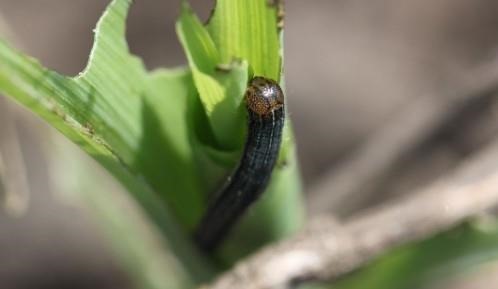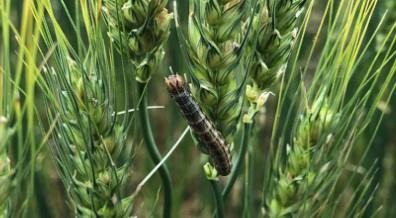Figure 1. True armyworm caterpillars can vary in color.
Identification
Caterpillars of the true armyworm can vary greatly in color from light brown to dark green or sometimes almost black (Figure 1). Fortunately, there are some other characteristics that can be used reliably to identify them.
True armyworm caterpillars have an orange stripe on each side of their body that runs from their head to the end of their abdomen. In addition, true armyworm caterpillars will have dark bands on each of their abdominal prolegs (Figure 2).
The last characteristic is the network of black lines that are present on their orange head capsule (Figure 3).

Figure 2. True armyworm caterpillars have an orange stripe on each side of their body and dark bands present on their abdominal prolegs.

Figure 3. True armyworm caterpillars have a network of black lines present on their orange head capsule.
Scouting and Management
True armyworm caterpillars are generally not present at large enough populations to be noticed. However, they can be easily scouted for with either sweep net sampling or individual plant observations. When scouting, the entire field should be examined. If examining individual plants, the threshold is 2 caterpillars per square yard. Sometimes the caterpillars will be found at the base of the plant or on the soil near the plant. If scouting with a sweep net, the threshold is 40 caterpillars per 30 pendulum sweeps. Remember, when using a sweep net to walk in a “W” or “Z” pattern through the field.
Caterpillar feeding can reduce yields, especially if the flag leaf is removed prior to the soft dough stage. As plants mature, fewer nutrients are available in the leaves, and the caterpillars will move to the heads to either feed on the beards (Figure 4) or cut the stem below the head.

Figure 4. True armyworm feeding on wheat beards.
Source : sdstate.edu